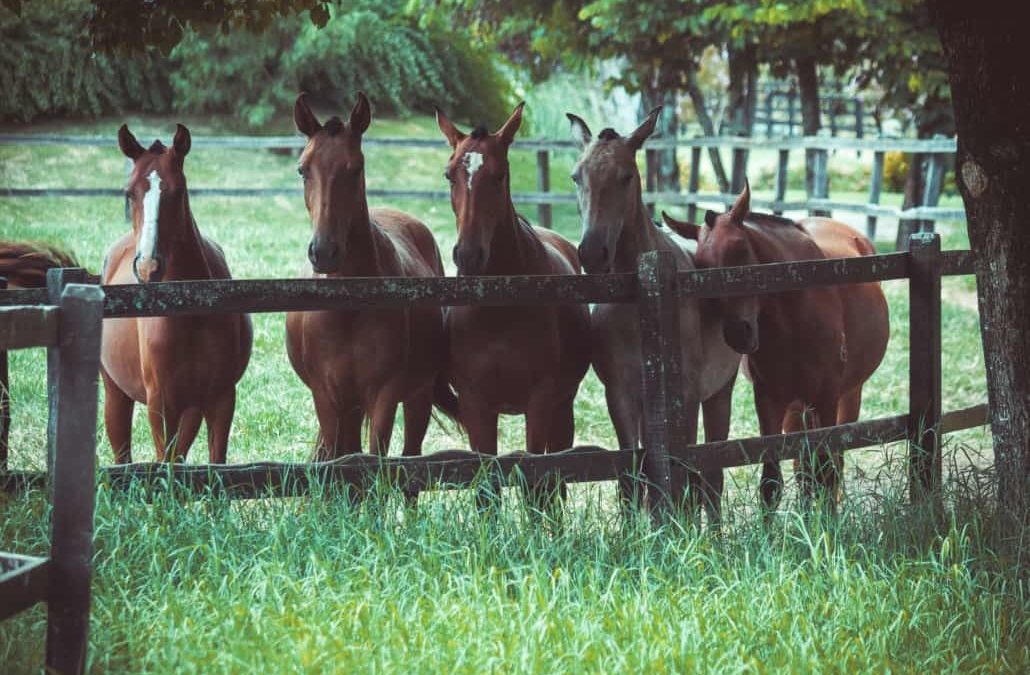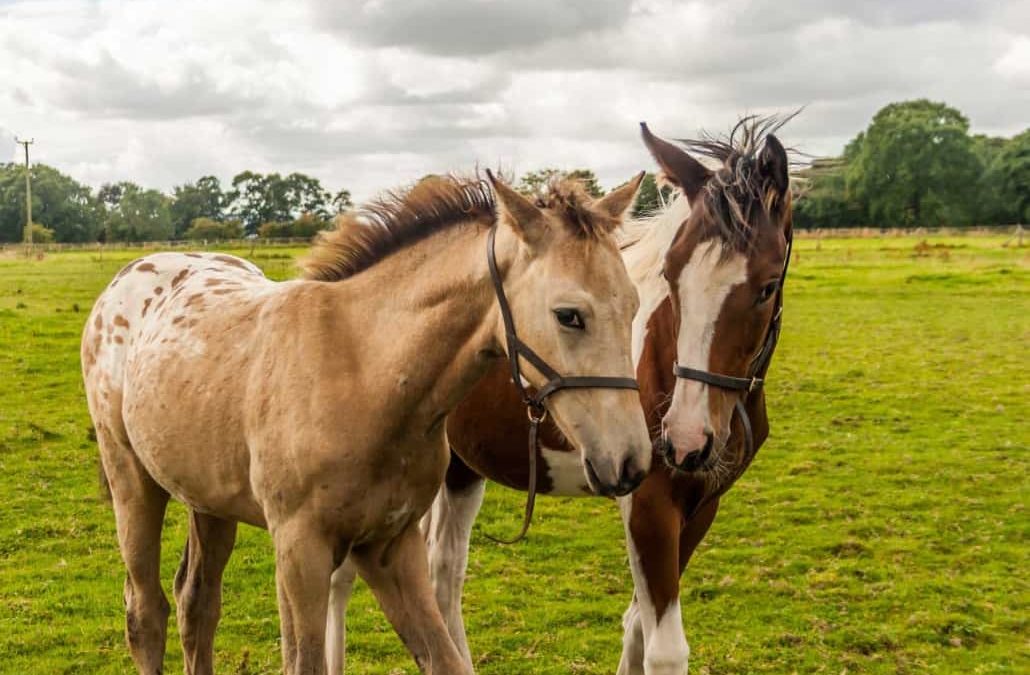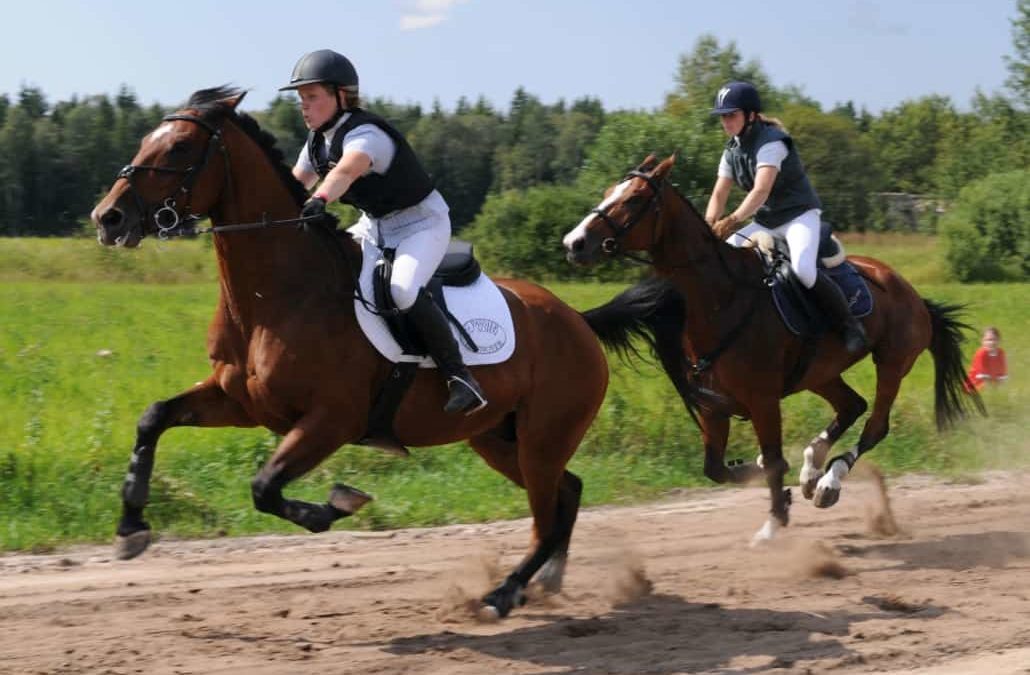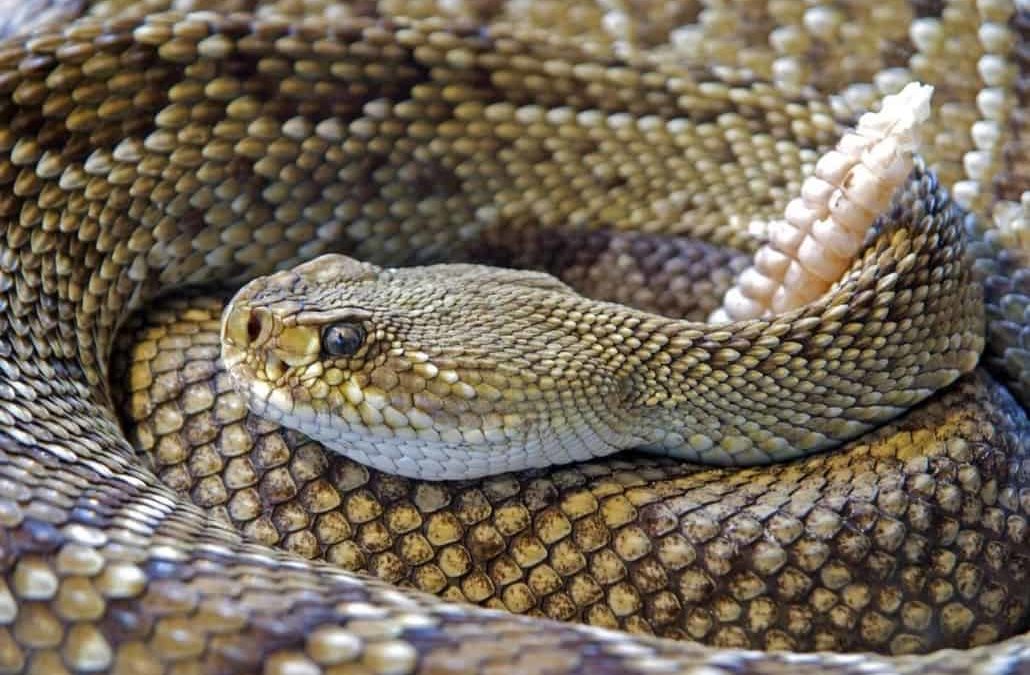by Ivy Bergstrom | Sep 27, 2021 | Animal Health
Here at BRD Vet Rx, we call ourselves an equine vet compounding pharmacy. You know that our passion is to help horses achieve the happiest and healthiest lifestyle possible, but what exactly makes us different from a non-compounding vet or pharmacist?
What Does A Compounding Pharmacy Do?
Animals need prescriptions for medications, just like humans do. Sometimes, people need custom combinations and dosages of medications to achieve their desired outcomes. This is called “compounding” – or “to make whole”. These combinations create a medicine that can’t be achieved with normal formulas.
Not all doctors are trained on how to compound medicine, but you can visit a certified compounding pharmacy to ensure that you get medication that fits your individual needs. Compounding pharmacies follow Food and Drug Administration (FDA) Extra-Label Drug Use regulations, and the pharmacist will make the drug based on their client’s (veterinarian’s) suggestion.
How is A Vet Compounding Pharmacy Different Than One For Humans?
Just like how the compounding pharmacies we go to are for humans, vet compounding pharmacies specialize in making custom medications for animals. The veterinarian determines what the animal needs, and will then compound the medication themself or will hire another pharmacist to do it for them.
The vets and pharmacists who work for vet compounding pharmacies study animal health, so that they can confidently determine what is in the animal’s best interest. Every pet owner wants to know that the medication that they buy is safe, legitimate, and the right combination of drugs for their animal. BRD just happens to specialize in horse medications – and we are proud of it!
When Should You Go to A Vet Compounding Pharmacy?
There are a variety of reasons why someone may need to take their furry friend to a compounding pharmacy. The overarching answer is that a standard vet pharmacy cannot provide the right medication to their pet. Here are some examples of reasons why someone may be directed to a compounding pharmacy:
- Their pet has an allergy and the ingredient must be removed for their safety
- They may need a higher or lower dosage than the standard
- The animal may not be able to swallow a pill, so a vet pharmacist needs to create a paste from the crushed up pills
- Their pet is picky, so the compounding pharmacist needs to add flavoring to the medicine so that they don’t spit it out
Your primary veterinarian will prescribe the compounded medication if they believe that the commercial options are not the best choice for your pet. They will provide a recommendation for a vet compounding pharmacy, and you will be able to have them make it for you.
Why Choose BRD Vet Rx?
There are lots of options out there for equine vet compounding pharmacies, so how do we stand out from the rest? Our story started in 1925 when we opened our doors to help horses live their best lives. Since then, we have almost 100 years of equine compounding experience!
We provide expertly-crafted sterile and non-sterile compounds, meaning we can serve almost any need for your horse. We believe in compounding the optimal formula for your horse’s needs at a fair and honest price. In addition:
- All Pharmacists and Technicians are fully licensed and meet the United States Pharmacopeia (USP) 797 and 795 requirements.
- We follow USP guidelines and use only FDA approved Active Pharmaceutical Ingredients.
- Provide fast reliable shipping while meeting medication requirements.
- Ensure all sterile compounds are tested for potency and sterility.
View our products here, or contact us today to see how we can best help you and your horse.

by Ivy Bergstrom | Aug 16, 2021 | Animal Health
How to Read Horse Body Language?
Do you ever wonder if your horse is trying to tell you something? People and horses form such strong connections because we are both intelligent, expressive creatures who communicate with verbal and physical cues. Horse body language can be expressed throughout their entire body, which is amazing – so how should we interpret it as horse owners?
Listen Up!
Ears are a very telling part of horse body language. As you may guess, when the ears are pinned back, they are angry or nervous. Do not approach the horse in this state, or you might get a nasty bite or kick.
As you’re training your horse, you may notice that your horse is more likely to listen when their ears are forward and alert – this means that they are interested and engaged in what’s in front of them. This is a good equine communication indicator that your horse is ready to listen.
When your horse is relaxed, you’ll notice that their ears are turned to the side. They may not be paying attention to anything, in particular, so be careful not to startle them. Make yourself known (calmly – no surprise hugs!) to avoid any negative reactions out of fear.
The Tale of Horse Tails
On the opposite end of the ears, lives the tail. Horses use their tails more than to just keep flies away – but it isn’t always easy to read what they’re trying to say. For example, slow, occasional swishing is normal behavior. But if you notice fierce, faster swishing, your horse is probably annoyed.
If you see their tail tucked tightly against their rear end, they are nervous and afraid. This is a pretty obvious sign that you should check in and think about how to make your horse more comfortable. It is not wise to get too close to them when they are feeling threatened like this.
When your horse is carrying its tail high, it’s on high alert. This could be accompanied by forward-facing ears – your horse is very interested in something. But do be mindful – some breeds of horses have naturally higher placed tails that may look like they are alert when they are actually relaxing.
Understanding Horse Vocalizations
Horses communicate with their voices, too – just like humans! Keep in mind that every horse communicates differently, but here are a few categories of sounds you may hear while chatting with your equine friend:
Examples of Positive Horse Vocalizations:
- Nickering (a soft, low sound that comes from the throat)
- Neighs
- Winnies
You can usually tell when your horse is happy. If they trot over to you, nuzzle you, or follow you, you know that they are content and that they like you (or they just really want that carrot in your hand).
Examples of Negative Horse Vocalizations:
- Squealing
- Aggressive Snorting
When horses feel immediately threatened, you may hear squealing accompanied by thrashing, ears back, and biting. If a horse is unsure but doesn’t feel quite right, they might be snorting and shaking their head. This could happen if they sense that something isn’t right.
Knowing these cues can help you better understand your horse and form a better connection. Remember to never approach a scared horse, and give them lots of positive feedback when they are friendly towards you. If you have any questions about your horse’s health, contact the team at BRD Vet Rx – we’d love to hear from you.

by Ivy Bergstrom | Jul 5, 2021 | Animal Health
About Uveitis In Horses
Vision loss is tragic for all species, but understanding it is important for the healthy treatment of eyes and taking proper care if vision does become lost. Uveitis in horses is an autoimmune disease that causes inflammation of the uveal tract of the eye, also known as the middle layer of the eye (between the cornea and retina). Episodes vary in severity, and it can happen once or multiple times. It’s the most common cause of vision loss in horses.
Can Horses Experience Uveitis More Than Once?
Uveitis in horses can be painful, and it’s never a good thing. However, it can be managed and treated, with the hope that it will not happen again. It is not completely preventable, but if it keeps happening, it may become a bigger issue.
Equine Recurrent Uveitis (ERU), or Moon Blindness, is repeated episodes of Uveitis. It can happen in one or both eyes, and can eventually lead to complete blindness. The term “moon blindness” was a term from the 1600s, when people thought it was temporary blindness influenced by moon phases. The damage cannot be reversed, but surgeries and proper care can prolong your horse’s vision.
What Are the Signs of Uveitis In Horses?
Some signs of Uveitis include tears in the eye, squinting, swollen and red eyeball(s), sensitivity to light, yellow pus, and/or a cloudy, bluish haze over the cornea of the eye. There are many factors that go into how susceptible your horse is to getting Uveitis, and sometimes the episodes are minor enough that you won’t notice until it’s too late and vision loss occurs.
According to Dr. Rana Bozorgmanesh, ERU affects 2-25% of the horse population in the United States. It is somewhat common, and certain breeds are more genetically predisposed to experience it. Appaloosas are the most at-risk breed, with up to a 25% prevalence to it. The disease is still somewhat a mystery to horse health care professionals, even though it has been recognized for centuries.
What Should I Do If I Think My Horse Has Uveitis?
Even if you’re not sure your horse is experiencing Uveitis, call a trusted horse health professional immediately. The earlier you can detect it, the better chance you have at prolonging your horse’s vision. There’s no test to determine if it’s a one-time occurrence or if it will happen again, but giving your veterinarian the most information that you can will give them a better idea about your horse’s situation.
You can work with them to find the primary cause of the episode (infection, blunt trauma, ulcer, etc), and this helps decide the likeliness of ERU. If it happened without a primary event triggering it, it’s more likely that it might happen again. Since it is a progressive disease without a defined cure, you’ll want to discuss an aging plan and proper treatment options.
How Do You Treat Uveitis In Horses?
Even if your horse has a one-time occurrence of Uveitis, you’re going to have to implement some treatment with your horse. Treatment options include topical anti-inflammatories, corticosteroids, and medications that dilate the pupil. The goal of these is to reduce inflammation and pain, prolonging the comfort and vision of your horse.
We hope that you and your horse never have to go through this, but being educated on the subject will best prepare you for catching it early on. Contact BRD Vet Rx with any questions you may have, or view our products for more information. We look forward to hearing from you and are here for your horse health needs.

by Ivy Bergstrom | Jun 21, 2021 | Animal Health
What is Ringbone?
As they age, horses will wear on their leg joints and hooves from day-to-day activity. Eventually, this can lead to a degenerative arthritis condition called Ringbone. It affects the pastern and coffin joints, also known as the high and low ringbone. Ringbone in horses starts when joint inflammation occurs, leading to pain and lameness.
Signs of Ringbone in Horses
Lameness is one of the first signs of Ringbone. Horses that have a more upright hoof angle are more likely to suffer from Ringbone because they don’t absorb impact as well and put more weight on the joints. In more advanced cases, you may notice a bony, swollen mass surrounding the high or low ringbone.
The mass will be hard (bony) when you press on it, and pressure will not hurt your horse. Sharp pain will occur once the affected joint is flexed – but don’t try this yourself. Call a horse health professional to take a look, instead.
How To Treat Ringbone In Horses
Your farrier or horse health professional may have a variety of treatment suggestions depending on your horse’s weight, activity level, build, etc.. Ringbone can affect horses of all ages, shapes, and sizes, and there is no one treatment that works for all patients. Since it is a progressive disease that is irreversible, the focus will be on managing your horse’s comfort and mobility.
A farrier may suggest special corrective shoes to minimize overuse of joints for comfort. As far as medication goes, joint-feed supplements and non-steroidal anti-inflammatories (NSAIDs) are popular for reducing pain. These treatments are usually topical or injected.
There’s also another method that is used that may surprise you: fusing the joints. Depending on how the disease progresses, the affected joints may fuse together. This relieves some of the pain the horse experiences because the joint cannot be flexed anymore. Some horse health professionals elect to medically speed up the process if they think it’s the best option for the horse.
What Should I Do If I Think My Horse Has Ringbone?
If you see signs of lameness or a swollen area around the ringbone joints, call your trusted horse health professional. They will be able to properly rule out other options and diagnose your horse without further injuring them. From there, you can discuss a treatment plan that has your budget and horse’s best interest in mind.
Your farrier might recognize Ringbone during a scheduled appointment as well. He might be able to give some advice on corrective shoe fittings or other options to improve the comfort of your equine companion.
View our horse health products or contact us at BRD Vet Rx today for more information.

by Ivy Bergstrom | Jun 7, 2021 | Animal Health
Why Should I Practice Good Horse Hair Care?
Easy, breezy, beautiful…Coverhorse? Just like humans, a horse’s mane can be the focal point of style and elegance. Horse hair care is an important part of hygiene and the overall grooming process, so let’s learn how to take the best care of those luscious locks.
Healthy grooming habits have a variety of benefits when it comes to your horse. Most horses enjoy being brushed, and it’s a good time to bond and build trust. It also helps keep your horse clean by removing dirt and dander that can negatively affect the skin.You can train your horse by having them be still, calm and having their hooves handled. It’s also a good time to check your horse for unusual cuts or abrasions.
Beauty From the Inside Out
As you could guess, diet is one of the main influences when it comes to horse hair care. If you’re striving for a strong, shiny, and thick mane and tail, make sure to feed your horse a rich, nutritional diet. Protein, amino acids, and vitamins from high-quality forage materials will help promote the best hair health.
Wash With Care
Choosing a good shampoo is an important first step when washing your horse’s mane and tail. Try and choose one that is light on sulfates (they dry hair out), and has a natural ingredient base, such as coconut oil. There are lots of options at every budget, so you should be able to find one that works for you. Considering climate conditions should also help with your decision.
Start from the roots and scrub to loosen all the dirt and oil trapped near the scalp. Massaging this area will also increase blood flow and encourage hair growth. Be cautious not to use too much conditioner, as too much oil will clog pores and attract dirt.
The same process can be used for the tail – be sure to scrub out all the dirt and dead skin buildup.You can finish off the process with some leave-in conditioner if you really want the mane and tail to stay hydrated and shine.
Get the Right Tools For the Job
Using wide-toothed combs and dandy brushes will ensure a positive grooming experience for everyone involved. Be careful not to tug too hard and hurt your horse, this will stress them out and make them scared of grooming.
You may also want to consider not brushing the tail and mane every day, as this will make the hair thin. It can take a long time for horses to regrow hair. Human hair brushes will break and damage hair, so make sure to avoid those.
Beautiful Braids
After your horse’s mane and tail are cleaned and moisturized, you can braid the hair to keep it pristine. Start at the top, and loosely start to braid the hair in two-inch sections. You can wave tighter as you go down, but don’t ever pull or make it too tight – the goal is to minimize breakage. You start loosely so that the braid isn’t pulling at the roots, which can be uncomfortable.
And there you have it! We hope that these horse hair care tips get you excited about your next grooming session. BRD Vet Rx has been encouraging healthy horse care for almost 100 years. View our products or contact us today, we look forward to hearing from you.

by Ivy Bergstrom | May 24, 2021 | Animal Health
About Snakebites in Horses
Seeing a venomous snake can be a rather rattling experience. When the sun comes out, snakes are more likely to come above ground and sun themselves. While we all enjoy a good tanning session, no one wants to come across a slithering surprise. Snakebites in horses are a somewhat low threat in the United States, but having a plan of action could save your horse’s life if the situation arises.
Smaller and younger horses and ponies are at higher risk for danger when a venomous snake bites them because their smaller bodies can be affected by the venom faster than bigger horses. If they are younger, they may not be as strong to fight off infection, and they might run more out of fear, making the venom be absorbed faster.
What Are Dry Snakebites?
Whether the snake is venomous or not, snakebites are scary and painful. “Dry Bites”, or snakebites where no venom is involved, cause minimal wounds. They are usually shallow, and the biggest risk is infection. A tetanus booster injection can help prevent infection from deeper bites. Your horse health professional will advise you depending on the wound.
Venomous Snakebites in Horses
When a venomous snake bites your horse, you need to act fast. Call your veterinarian or trusted horse health professional immediately. Snakes may bite from being stepped on (leg bites), or your horse may have gotten a little too curious and the snake bit its nose out of fear.
After a rattlesnake or other venomous snake attacks, you may immediately notice some indicators: the rattling of the snake’s tail before it strikes, two pin-sized red holes at the site of the bite, swelling around the infected area, and/or soreness around the bite area.
The sooner your horse can receive professional medical help, the higher chance it has to survive and recover. Once you know (or think) your horse has been bitten and you call a professional, you should try to keep your horse as calm and still as possible.
What to Do Until the Veterinarian Arrives
After you confirm that medical help is on the way, halter your horse and keep them calm. Stay with the horse until help arrives. The less your horse moves, the less toxin the toxin will be absorbed into their blood. Avoid touching the bite area, and try to encourage their head to stay in a comfortable position looking down (this discourages the spread of the toxin).
You can also gently apply a cool, damp cloth to your horse if they feel overly warm. Just be careful not to hurt your horse by touching the infected area. Do not try sucking the venom out or other questionable rumors you have heard. Next, if you can comfortably and safely do so, try to identify the snake. Any information (snake type, bite location, tetanus booster history, etc) can help the veterinarian once they arrive.
We hope that you and your loved ones never have to go through the pain and stress of any snakebite, but we hope that these tips will help you feel prepared so that you can act fast if needed. Contact us at BRD Vet Rx today for questions or horse health product information.





